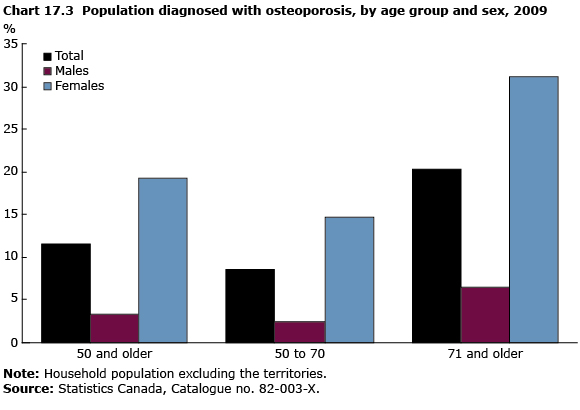Senior women more likely to have osteoporosis
Archived Content
Information identified as archived is provided for reference, research or recordkeeping purposes. It is not subject to the Government of Canada Web Standards and has not been altered or updated since it was archived. Please "contact us" to request a format other than those available.
Related information
After the age of 50, adults—especially women—have a higher risk of developing osteoporosis, a disease characterized by loss of bone mass, increased bone fragility and increased risk of fractures.
In 2009, 19.2% of women and 3.4% of men aged 50 and older reported being diagnosed with osteoporosis. Among those aged 71 and older, 31.1% of women and 6.4% of men reported being diagnosed.
Diagnosed osteoporosis was significantly associated with Aboriginal status, low household income, alcohol consumption, high nutritional risk and low body mass index. Additionally, women aged 50 to 70 living in low-income households were more at risk.
Osteoporosis prevention and treatment usually entails the intake of calcium and vitamin D. In 2004, 28% of men and 48% of women aged 50 and older took calcium supplements; of those diagnosed with it, 36% of men and 59% of women did so.
- Date modified:

